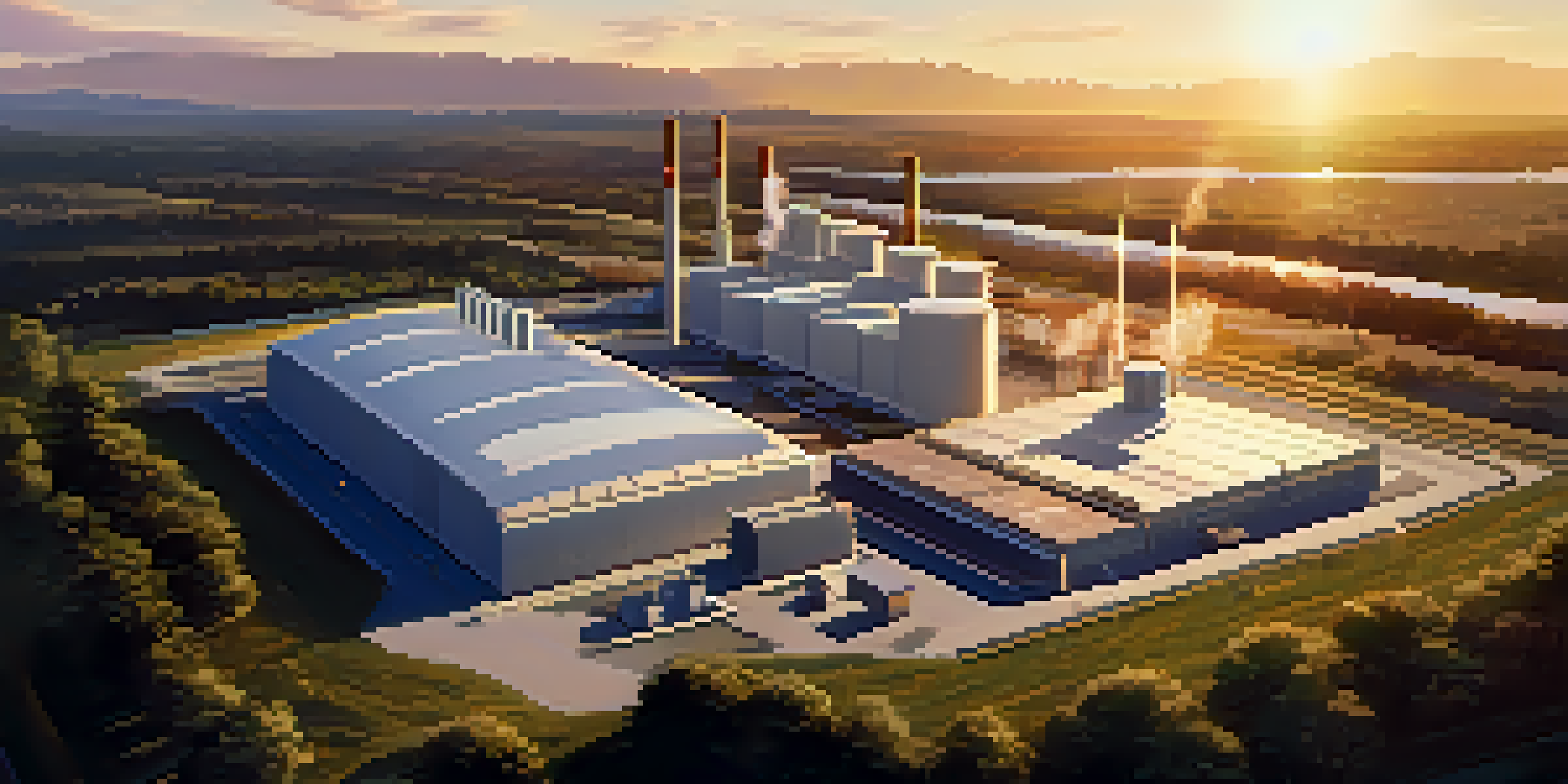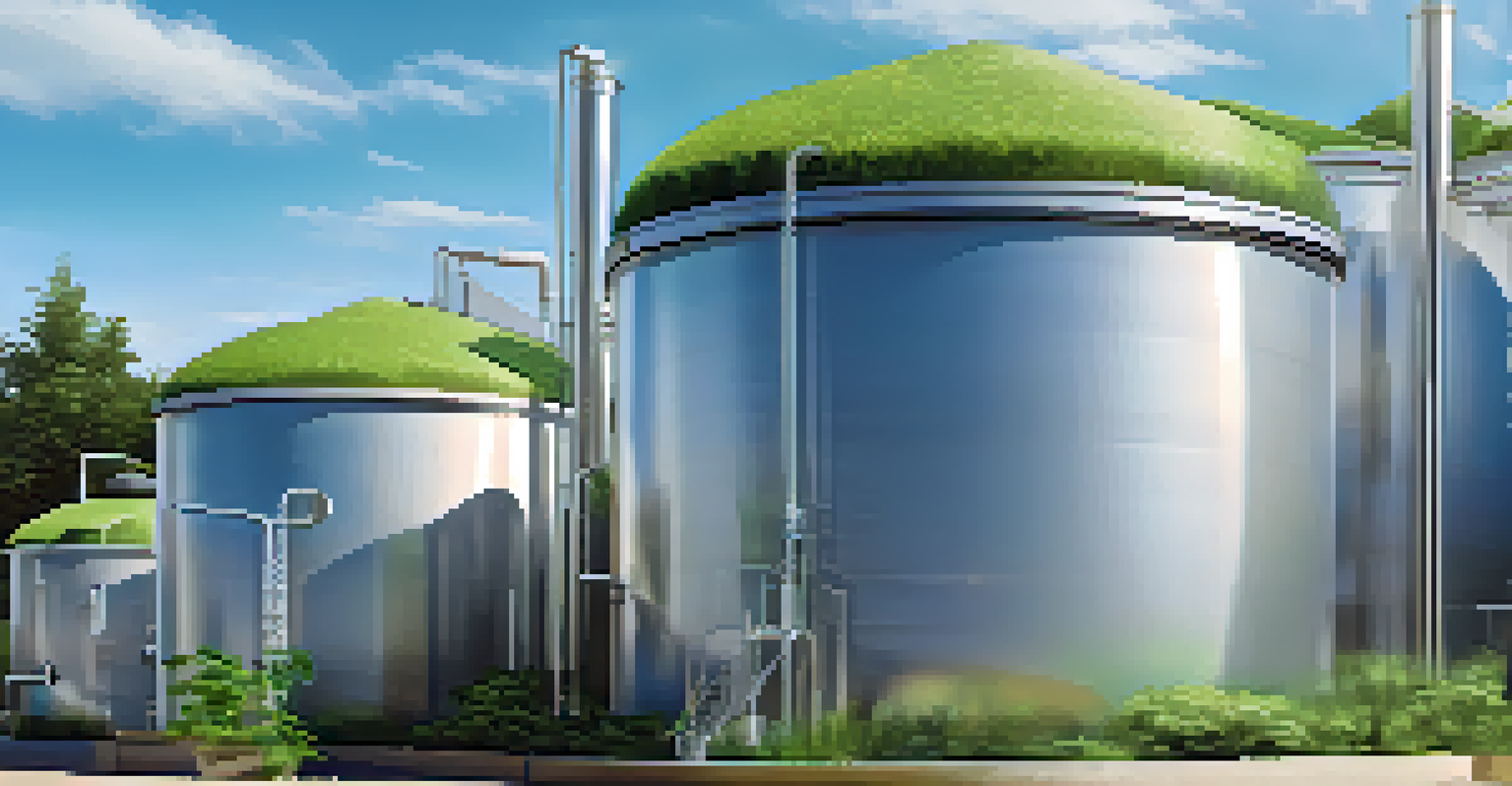Waste-to-Energy Technologies: Converting Waste to Power

Understanding Waste-to-Energy Technologies
Waste-to-energy (WtE) technologies are innovative methods that convert waste materials into usable energy. This energy can take the form of electricity, heat, or biofuels, helping to reduce landfill waste while providing an alternative energy source. Essentially, WtE technologies turn what we discard into something valuable, creating a more sustainable energy future.
The greatest threat to our planet is the belief that someone else will save it.
The process typically involves various technologies, such as incineration, anaerobic digestion, and gasification. Each method has its unique approach to breaking down waste and extracting energy. For example, incineration burns waste at high temperatures, while anaerobic digestion uses microorganisms to break down biodegradable material without oxygen.
By harnessing the energy from waste, we can reduce greenhouse gas emissions and reliance on fossil fuels. This not only benefits the environment but also promotes energy independence, making WtE a crucial component in the global shift towards sustainable energy solutions.
The Incineration Process Explained
Incineration is one of the most common waste-to-energy technologies, involving the combustion of organic materials. During this process, waste is burned at high temperatures, converting it into ash, flue gases, and heat. The heat generated can then be used to produce steam, which drives turbines to generate electricity.

While incineration effectively reduces waste volume by up to 90%, it also raises concerns about air pollution and toxic emissions. Modern incineration plants are equipped with advanced air pollution control systems to minimize these risks. These systems filter out harmful substances, ensuring that the process is as environmentally friendly as possible.
Waste-to-Energy Reduces Landfill Waste
Waste-to-energy technologies convert waste into usable energy, significantly decreasing landfill waste and promoting sustainability.
Despite its challenges, incineration remains a viable option for waste management in many regions, especially where landfill space is limited. By turning waste into energy, we can derive value from what would otherwise contribute to environmental degradation.
Exploring Anaerobic Digestion as a Solution
Anaerobic digestion is another popular waste-to-energy technology, particularly suited for organic waste like food scraps and agricultural residues. This process involves microorganisms breaking down organic matter in the absence of oxygen, producing biogas as a byproduct. Biogas primarily consists of methane, which can be used to generate electricity or heat.
Waste is a design flaw.
The beauty of anaerobic digestion lies in its dual benefits: it reduces waste and produces renewable energy. Additionally, the digestate left after the process can be used as a nutrient-rich fertilizer, closing the loop in waste management. This makes anaerobic digestion an attractive option for farms and food processing facilities.
As we look to reduce food waste and greenhouse gas emissions, anaerobic digestion stands out as a sustainable solution. It exemplifies how we can transform waste into valuable resources while fostering a circular economy.
Gasification: A High-Tech Approach
Gasification is a cutting-edge waste-to-energy technology that converts organic or fossil-based materials into syngas, a mixture of hydrogen and carbon monoxide. This process involves heating the waste in a low-oxygen environment, allowing the materials to break down into simpler compounds. The resulting syngas can then be used to generate electricity or be converted into fuels.
What sets gasification apart is its ability to handle a wider variety of waste types, including plastics and industrial byproducts. This flexibility makes it a valuable option for regions dealing with diverse waste streams. Moreover, gasification produces less ash compared to incineration, making waste disposal easier.
Economic Growth from WtE Facilities
Investing in waste-to-energy facilities can lower waste disposal costs and create jobs, benefiting local economies.
As technology continues to advance, gasification offers promising prospects for the future of waste management. By transforming waste into clean energy, we can address both energy needs and environmental concerns.
Economic Benefits of Waste-to-Energy
Investing in waste-to-energy technologies brings significant economic benefits to communities. By converting waste into energy, municipalities can reduce their waste disposal costs while generating revenue from energy sales. This creates a win-win scenario where communities can manage waste effectively while benefiting financially.
Moreover, waste-to-energy facilities can create jobs in various sectors, from construction to operation and maintenance. This not only boosts local economies but also fosters a skilled workforce trained in renewable energy technologies, further driving innovation.
As more regions adopt waste-to-energy solutions, the potential for economic growth increases. By embracing these technologies, we can support a sustainable future while enhancing local economies.
Environmental Impact of Waste-to-Energy
The environmental impact of waste-to-energy technologies is a crucial consideration as we strive for sustainability. By diverting waste from landfills, WtE reduces methane emissions—a potent greenhouse gas released from decomposing waste. This helps mitigate climate change and promotes a healthier planet.
Additionally, WtE facilities are designed with advanced emissions control technologies to limit pollutants. These systems ensure that harmful substances are captured and treated before they enter the atmosphere, making modern waste-to-energy plants much cleaner than their predecessors.
Environmental Benefits of WtE
Waste-to-energy technologies help mitigate climate change by reducing methane emissions and utilizing advanced pollution control measures.
Ultimately, the shift towards waste-to-energy represents a proactive approach to waste management and environmental stewardship. By minimizing landfill use and harnessing energy from waste, we can create a cleaner, greener future.
Challenges in Waste-to-Energy Implementation
While waste-to-energy technologies offer numerous benefits, they also face challenges that need to be addressed. Public perception and acceptance can be significant hurdles, as many people are concerned about air pollution and environmental impacts. Education and transparency are key to fostering understanding and support for these technologies.
In addition, the initial investment required for building waste-to-energy facilities can be substantial. However, many argue that the long-term savings and economic benefits outweigh the upfront costs, especially when considering the rising costs of landfill disposal and the need for sustainable energy sources.

Navigating regulatory frameworks also poses challenges, as policies can vary significantly from one region to another. Collaborating with local governments and stakeholders is essential to create a supportive environment for WtE projects and ensure their successful implementation.
The Future of Waste-to-Energy Technologies
Looking ahead, the future of waste-to-energy technologies appears promising as innovation continues to drive improvements. Advances in technology are making WtE processes more efficient and cost-effective, increasing their appeal as a sustainable energy solution. Researchers are also exploring new methods for converting waste into energy, expanding the potential applications.
As global populations grow and waste generation increases, the urgency for sustainable waste management solutions becomes more apparent. Waste-to-energy technologies can play a vital role in addressing these challenges, helping to close the loop in waste management while providing clean energy.
Ultimately, by embracing and investing in waste-to-energy technologies, we can move towards a more sustainable future. As awareness and acceptance grow, we have the opportunity to reshape how we view waste, transforming it from a burden into a valuable resource.